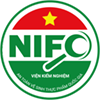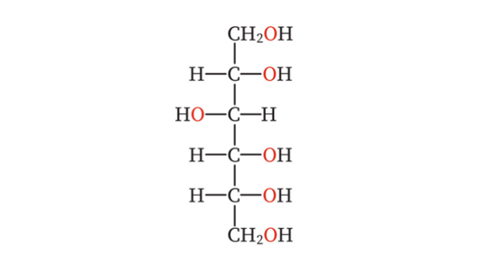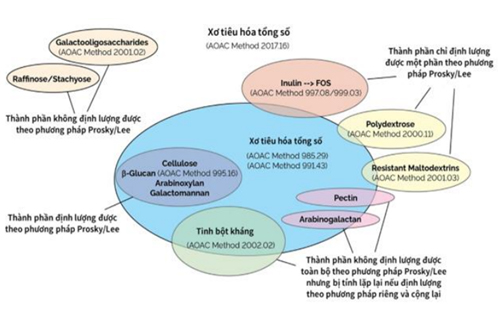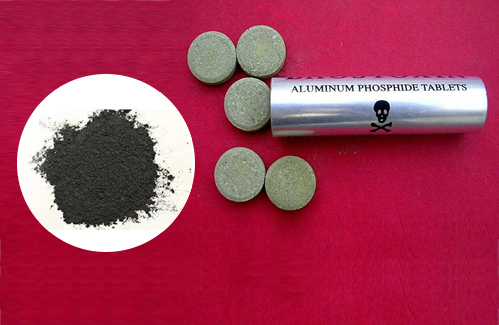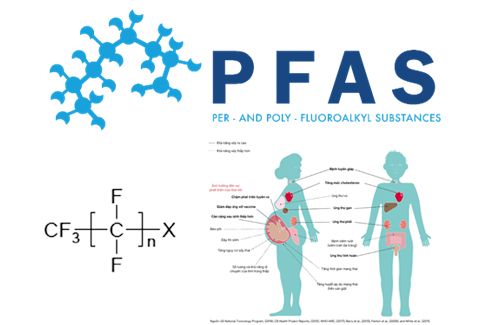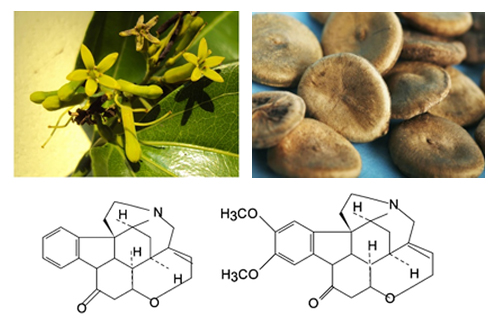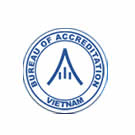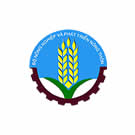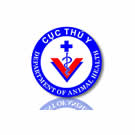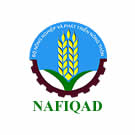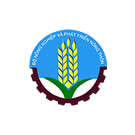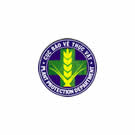- Folder Technical News
- Views 4039
- Last Updated 14/10/2024
Using Borax in food has been put a ban by the Ministry of Health; however, it is still sold and used illegally in food products such as ham, pork sausage, pho noodle, vermicelli noodle, rice cakes, etc. to create a crispy texture despite the potential harms to human health
1. What is borax?
Borax is a chemical compound of Boron with Sodium and Oxygen, a salt of Boric Acid with the chemical formula Na2B4O7, commercially known as Sodium Tetraborate, Sodium Pyroborate, Sodium Peborate…, and abbreviated as Borax. In Vietnam, borax is called under many different names such as bằng sa, bồng sa, nguyên thạch. The structural formula of borax is shown in Figure 1
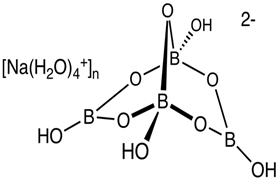
Figure 1. Structural formula of borax
Borax is a white crystalline salt that is odorless, tasteless, slightly soluble in cold water but highly soluble in hot water, with the ability to kill bacteria and fungi. Thanks to those properties, it is widely used in the industry of producing detergents, water softeners, disinfectants, and pesticides. In addition, it is also used to make glass enamel, ceramic glaze, and harden ceramics.
Borax is a texturizing agent, has mild antiseptic properties, limits fermentation, prevents mold, increase the toughness of some food products made from meat, fish, etc. Taking advantage of these properties, some enterprises and small businesses have abused borax to illegally mix in food products such as ham, pork sausage, noodles, pho, etc. to make them tougher and extend the shelf life.
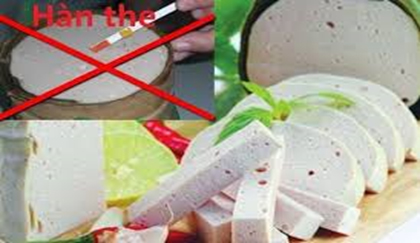
Figure 2. Borax contamination in ham and sausage
2. Harmful effects of borax on human health
Borax can cause chronic poisoning if used in low doses for a long time, which can lead to disorders of digestion, absorption, nutrient metabolism, damages to the liver, kidneys and brain. Acute poisoning can also occur after 6-8 hours consuming borax at a dose of about 5 grams or more, with symptoms such as nausea, vomiting, diarrhea, gastrointestinal bleeding; headache, coma, convulsions; rapid pulse, and in severe cases, decreased blood pressure, heart arrhythmia, shock; red rash on the skin, possibly on the palms, buttocks, mouth, and red throat. Vulnerable subjects are children and pregnant women.
Due to the above-mentioned toxicities, borax is not on the list of food additives allowed to be used in food production, business and processing according to Circular No. 24/2019/TT-BYT and Circular No. 17/2023/TT-BYT. However, the use and abuse of borax in food in Vietnam existed a long time ago and has remained an urgent issue for many years. The management and banning of borax use in food has encountered a lot of difficulties. It is still sold openly at markets, is easy to buy, at very cheap prices. Therefore, it is hard to manage and supervise the use of borax in food, and really challenging to permanently stop it in a short time. As a result, testing borax in food is extremely necessary in order to provide enough legal basis to help the government authorities to manage the violations and determine the hazard level of products.
3. Testing of borax
Studies on qualitative, semi-quantitative and quantitative methods of borax in food have been soon of interest to domestic authorities and scientists due to the awareness of its effects on public health.
Borax quantification can be performed by methods ranging from simple ones such as test kits, titration to modern ones such as spectroscopy (UV-Vis, AAS, CIP).
In 2012, the Ministry of Science and Technology issued the national standard TCVN 8895 : 2012 on qualitative and semi-quantitative methods for sodium borate and boric acid in food. Accordingly, borax existing in food in the form of boric acid or sodium borate can be detected by turmeric paper. Food containing borax will cause discoloration of the turmeric paper from yellow to orange-red. Compare the colors of the turmeric paper when dipped in the sample solution and the standard solution to estimate the approximate borax content in the sample. Based on this principle, the Institute of Biochemical Engineering and Professional Documents of the Ministry of Public Security has borax rapid test kits produced and widely used in the market to quickly test products containing borax. These test kits have proven to be quite effective in helping authorities to qualitatively determine and screen products containing borax on site, then positive samples will be sent to laboratories to accurately determine the borax content in them.

Figure 3. Borax qualitative test kit
However, in some cases, the manufacturers intentionally add a small amount of borax close to the detection limit of the test kit, not to mention the impact of sample matrix, which cause many difficulties for testing. Therefore, to accurately assess the borax content in food, it is necessary to use modern analytical methods such as atomic absorption spectroscopy (AAS), inductively coupled plasma atomic emission spectroscopy (ICP-OES) or inductively coupled plasma mass spectrometry (ICP-MS). The choice of analytical method depends on the sample matrix and the actual conditions that the laboratories are equipped with.
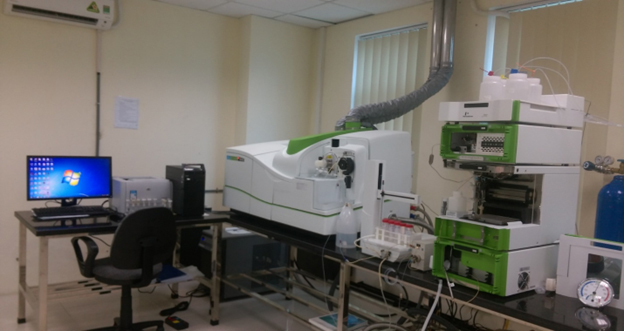
Figure 4. ICP-MS Nexion 350X system (Perkin Elmer)
With modern equipment and a team of experienced staff and experts, the group of authors Dinh Viet Chien and his colleagues at the National Institute for Food Control published the article “Simultaneous determination of borax and polyphosphate content in food by liquid chromatography-inductively coupled plasma mass spectrometry (LC-ICP-MS)” - https://doi.org/10.47866/2615-9252/vjfc.3788 in the Journal of Food Testing and Safety. vol. 4 - no. 2, pp. 115-126, 2021.
The liquid chromatography-inductively coupled plasma mass spectrometry (LC-ICP-MS) method was chosen by the authors to simultaneously determine borax and some forms of polyphosphate in food. Polyphosphates are salts or esters of phosphate ions polymerized through bridging oxygen atoms. Phosphate-based food additives are often in the form of salts of the elements sodium, potassium, calcium and magnesium and are allowed to be used in food with a number of roles such as acidity regulator, mineral supplement, emulsifier, stabilizer, thickener. These substances are regulated the maximum allowable limit based on the phosphate radical under the Circular 24/2019/TT-BYT. Among them, polyphosphate compounds are increasingly used and are considered as one of the main food additives to replace borax in the production and processing of ham, sausage and other meat products. However, the abuse of these supplements can also cause excess phosphorous, causing diarrhea, sclerosis of organs and soft tissues, and disrupting the metabolism of other mineral elements in the body, especially reducing calcium absorption.
Such method of determining the content of borax and polyphosphate compounds plays an important role in controlling toxic substances in food, and in accurately assessing the product quality, ensuring the health and interests of consumers.
The method has been applied to analyze the borax content in food samples of cereal, meat and seafood origin. The results show that most of the products processed from cereal are not at risk of borax and polyphosphate. Meanwhile, meat products such as ham and cinnamon-flavored pork sausage sold at traditional markets have borax detection rate of up to more than 60%. The meat product group also shows a high phosphate content, in which, the pyrophosphate detection rate is over 90% while the content of polyphosphates found in the samples is below the permitted threshold. With a high rate of samples contaminated with borax, ham and sausage products sold at the traditional markets show many potential risks to the health of consumers.
Author: Nguyễn Minh Châu
Tel: 0943754923
Email: nguyenminhchau2610@gmail.com
Department of Metals and Minerals
National Institute for Food Control
